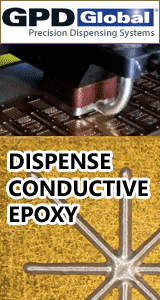Printed Circuit Board Assembly & PCB Design Forum
SMT electronics assembly manufacturing forum.
- SMTnet
- »
- Electronics Forum
- »
- ENIG CONTAMINATION
ENIG CONTAMINATION
Views: 9404
![]() Hi,
in our company, we had performed a failure analysis...
- Sep 04, 2009
by
XPS
Hi,
in our company, we had performed a failure analysis...
- Sep 04, 2009
by
XPS
![]()
![]()
![]() We are seeing similar issues. We have a board that consisten...
- Oct 09, 2009
by
tstrat
We are seeing similar issues. We have a board that consisten...
- Oct 09, 2009
by
tstrat
![]()
![]()
![]() George Milad [National accounts manager of technology, UIC/U...
- Oct 10, 2009
by
davef
George Milad [National accounts manager of technology, UIC/U...
- Oct 10, 2009
by
davef
![]()
![]()
![]() Base on my PCB experience, the contamination issue might cau...
- Oct 22, 2009
by
Shinsei Technology
Base on my PCB experience, the contamination issue might cau...
- Oct 22, 2009
by
Shinsei Technology
![]()
![]()
![]() --the lead time for ENIG only 6 monnths and need do baking...
- Oct 23, 2009
by
kircchoffs
--the lead time for ENIG only 6 monnths and need do baking...
- Oct 23, 2009
by
kircchoffs
![]()
![]()
![]() If the contamination came from the SMT process I would have ...
- Nov 03, 2009
by
tstrat
If the contamination came from the SMT process I would have ...
- Nov 03, 2009
by
tstrat
![]()
![]()
![]() The phosphorous concentration was not elevated w.r.t. levels...
- Nov 04, 2009
by
tstrat
The phosphorous concentration was not elevated w.r.t. levels...
- Nov 04, 2009
by
tstrat
![]()
![]()
![]() what level did you have
...
- Nov 04, 2009
by
BLT Circuit Services Ltd
what level did you have
...
- Nov 04, 2009
by
BLT Circuit Services Ltd
![]()
![]()
![]() It was 7 wt% according to the EDS spectrum at the EN layer n...
- Nov 04, 2009
by
tstrat
It was 7 wt% according to the EDS spectrum at the EN layer n...
- Nov 04, 2009
by
tstrat
![]()
![]()
![]() I thought it had to be > 10% Wt
...
- Nov 04, 2009
by
BLT Circuit Services Ltd
I thought it had to be > 10% Wt
...
- Nov 04, 2009
by
BLT Circuit Services Ltd
![]()
![]()
![]() That is interesting, I have not seen that as a requirement b...
- Nov 04, 2009
by
tstrat
That is interesting, I have not seen that as a requirement b...
- Nov 04, 2009
by
tstrat
![]()
![]()
![]() I asked our lab about this and received this response:
"Typ...
- Nov 04, 2009
by
tstrat
I asked our lab about this and received this response:
"Typ...
- Nov 04, 2009
by
tstrat
![]()
![]()
![]() I see thanks for that
...
- Nov 05, 2009
by
BLT Circuit Services Ltd
I see thanks for that
...
- Nov 05, 2009
by
BLT Circuit Services Ltd
![]()
- SMTnet
- »
- Electronics Forum
- »
- ENIG CONTAMINATION







